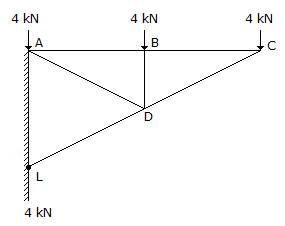Civil Engineering - UPSC Civil Service Exam Questions
Exercise : UPSC Civil Service Exam Questions - Section 16
- UPSC Civil Service Exam Questions - Section 14
- UPSC Civil Service Exam Questions - Section 27
- UPSC Civil Service Exam Questions - Section 26
- UPSC Civil Service Exam Questions - Section 25
- UPSC Civil Service Exam Questions - Section 24
- UPSC Civil Service Exam Questions - Section 23
- UPSC Civil Service Exam Questions - Section 22
- UPSC Civil Service Exam Questions - Section 21
- UPSC Civil Service Exam Questions - Section 20
- UPSC Civil Service Exam Questions - Section 19
- UPSC Civil Service Exam Questions - Section 18
- UPSC Civil Service Exam Questions - Section 17
- UPSC Civil Service Exam Questions - Section 16
- UPSC Civil Service Exam Questions - Section 15
- UPSC Civil Service Exam Questions - Section 1
- UPSC Civil Service Exam Questions - Section 13
- UPSC Civil Service Exam Questions - Section 12
- UPSC Civil Service Exam Questions - Section 11
- UPSC Civil Service Exam Questions - Section 10
- UPSC Civil Service Exam Questions - Section 9
- UPSC Civil Service Exam Questions - Section 8
- UPSC Civil Service Exam Questions - Section 7
- UPSC Civil Service Exam Questions - Section 6
- UPSC Civil Service Exam Questions - Section 5
- UPSC Civil Service Exam Questions - Section 4
- UPSC Civil Service Exam Questions - Section 3
- UPSC Civil Service Exam Questions - Section 2
46.
A jet of water issues from a 5 cm diameter nozzle, held vertically upwards, at a velocity of 20 m/sec. If air resistance consumers 10% of the initial energy of the jet, then it would reach a height, above the nozzle, of
47.
A given material has Young's modulus E, modulus of rigidity G and Poisson's ratio of Young's modulus to modulus of rigidity of this material is,
48.
The force in the member BD of the truss shown in the given figure is


49.
Which of the following instruments have both horizon glass and index glass ?
1. Optical square
2. Line ranger
3. Box sextant
4. Pedometer
Select the correct answer using the code given below :
1. Optical square
2. Line ranger
3. Box sextant
4. Pedometer
Select the correct answer using the code given below :
50.
Which of the following equations are used for the derivation of the differential equation for water surface profile in open channel flow :
1. Continuity equation
2. Energy equation
3. Momentum equation
Select the correct answer using the codes given below :
1. Continuity equation
2. Energy equation
3. Momentum equation
Select the correct answer using the codes given below :
Quick links
Quantitative Aptitude
Verbal (English)
Reasoning
Programming
Interview
Placement Papers